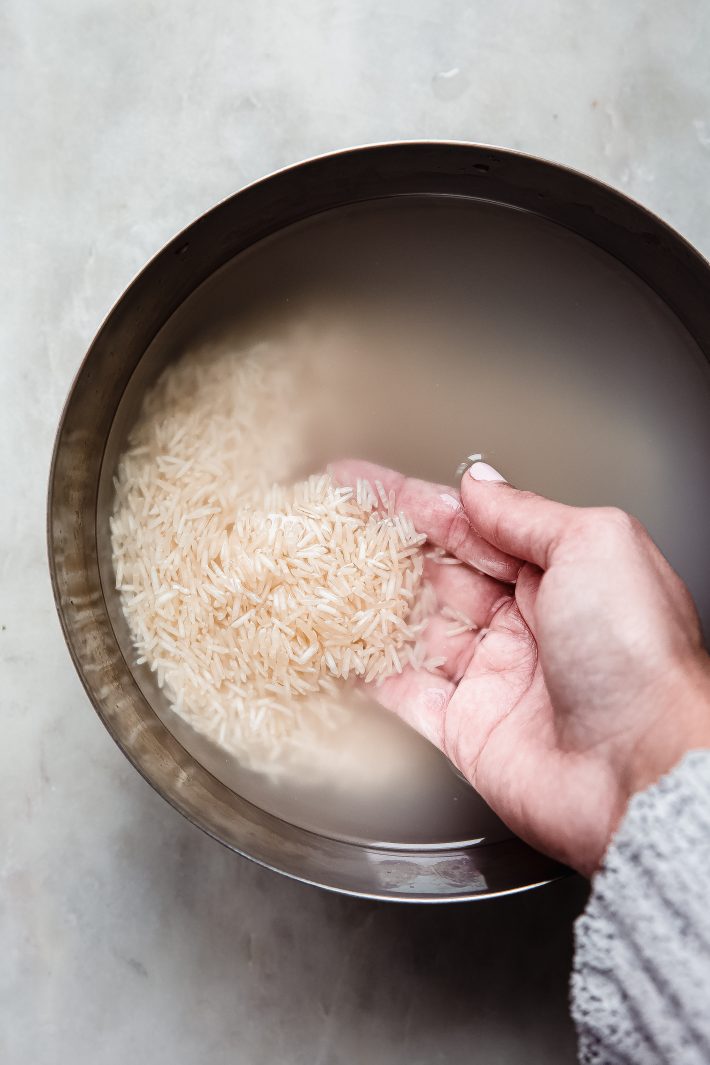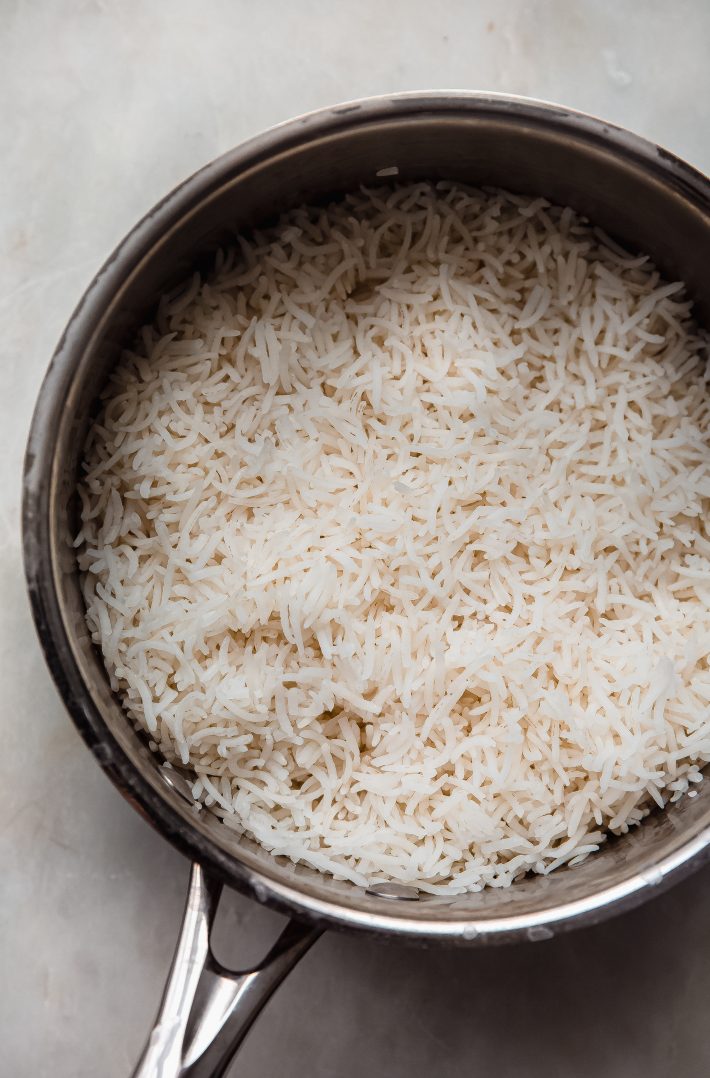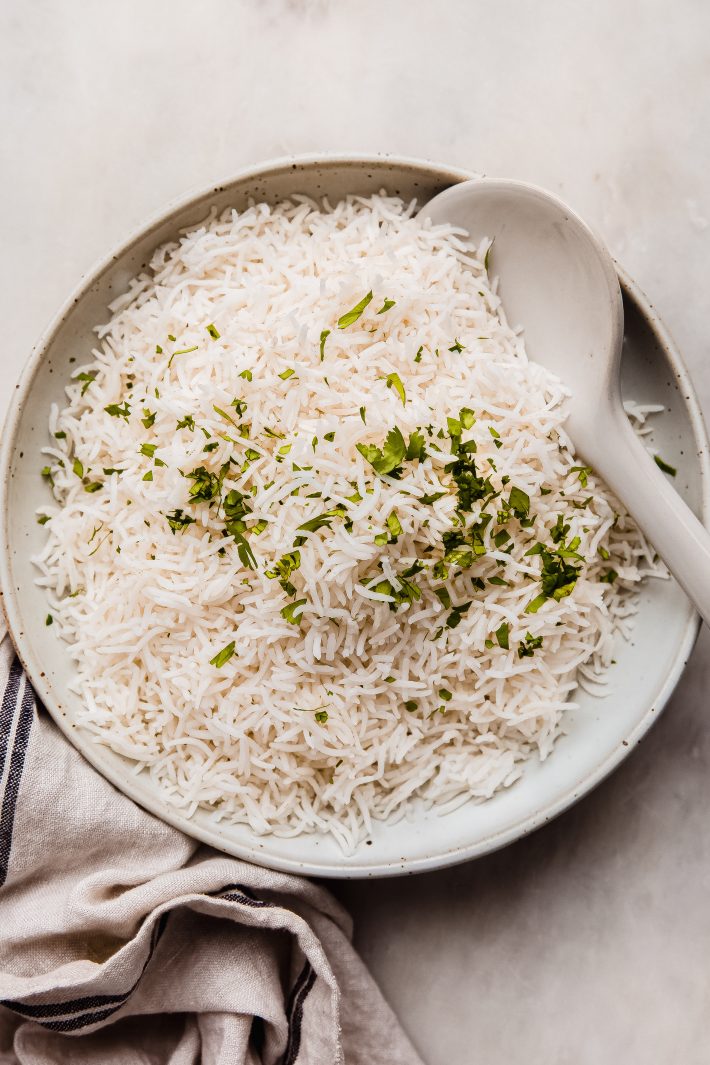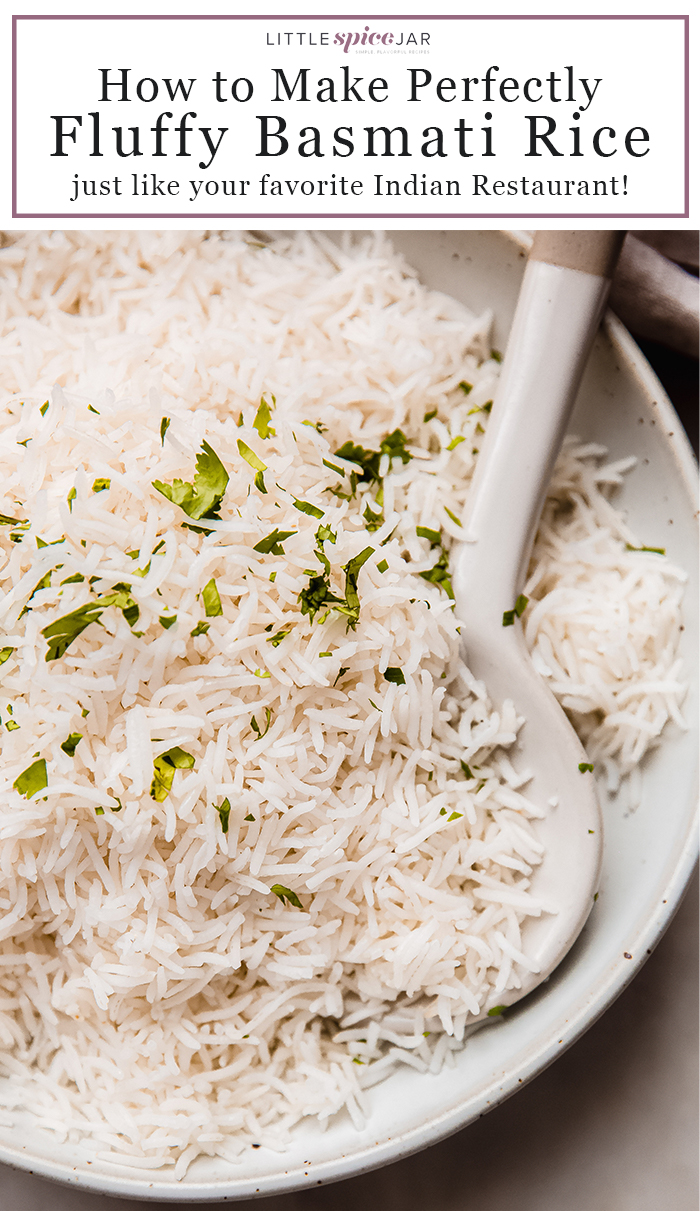Warm, fluffy homemade basmati rice. Growing up in a semi Indian household, it’s a smell that I still find comforting to this day. And if you’ve ever been to an Indian restaurant, you know what I’m talking about. The minute they set that dish of rice down, the steam rises from the bowl and wraps you in it in the coziest of ways. The method for cooking basmati rice is a little different than other rice you may have cooked in the past. Usually, when you cook rice, you’re used to working with a ratio, be it 1:1 or 1:2, and so on. With basmati rice, there are two key techniques to keep in mind and I’ll explain them below.
The key to making perfectly fluffy basmati rice is to soak it as you would beans and cook it like you would pasta.
Why do you soak basmati rice before cooking it?
Just like when you’re working with dried beans, soaking the rice ahead of time in room temperature water allows the rice to absorb some of the water. Since the rice has soaked in water, it decreases the amount of time you’d need to boil the rice.
What do you need to make basmati rice?
Basmati rice: You want to use a long grain basmati rice for this recipe. If you can get your hands on an Indian brand of rice, that would be best. A lot of mainstream grocery stores have actually started stocking the more popular brands. This is my favorite brand to use. It has been my go-to basmati rice for the last 8 years. It is almost double the cost online, so if you have an Indian store close by, show the grocery store clerk a picture of the packaging, and I’m pretty sure they have some for you to purchase!Water: Don’t be alarmed; my recipe uses a lot more water than most rice recipes. We’re going to cook the rice like you would pasta.Salt: I exclusively use kosher salt at home and suggest the quantity to use for that. If you use table salt, you’ll want to use less so that the rice isn’t too salty.White Vinegar: is cheap and easy to find, so that’s what is usually used. Oil: You can use any oil you like. We drizzle it in the pot before we steam the rice. Ghee or butter also work and would give the rice additional flavor.
Why do you add vinegar when boiling the rice?
Adding a tablespoon of vinegar to the water when boiling basmati rice keeps the rice starches from sticking together. That way, you have fluffy rice that separates easily and doesn’t stick together.
How to make perfect basmati rice at home:
What to serve with homemade Indian rice:
The BEST Butter ChickenHomemade Palak Paneer (Saag Paneer)Chicken Tikka Masala30-Minute Spicy Shrimp MasalaComforting Red Lentil Soup (Dal Soup)30-Minute Garlic Brown Lentil DalCreamy Chipotle Butter Chicken MeatballsWeeknight Chana Masala Rice Bowls










